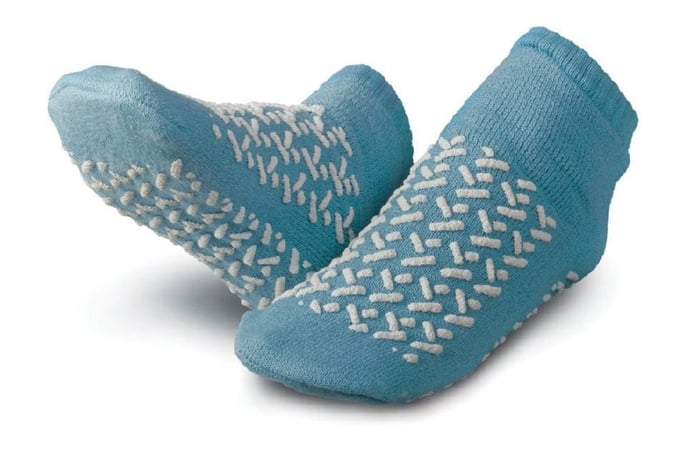Hospital slipper socks are an essential part of patient care, providing comfort, safety, and hygiene. But where can you purchase them, and what do you need to know before making a choice? In this blog post, we'll delve into the world of hospital slipper socks and provide answers to your burning questions.
1. What Are Slipper Socks?
Slipper socks, often referred to as non-slip socks or grip socks, are specialized socks designed to enhance traction and safety while walking on smooth or slippery surfaces. These socks feature rubberized patterns or treads on the sole to prevent slips and falls. Hospital slipper socks are typically made from soft, comfortable materials to keep patients' feet warm and cozy during their hospital stay.
2. Can You Wash Slipper Socks?
Yes, you can wash hospital slipper socks. In fact, it's essential to maintain proper hygiene and cleanliness. Most slipper socks are machine-washable, making them easy to care for. To ensure the longevity of your slipper socks, follow the care instructions provided by the manufacturer. Typically, you can wash them with similar colors in cold or warm water and then tumble dry on low heat. Avoid using bleach or fabric softeners, as they can damage the non-slip features of the hospital slipper socks with grips.
3. What Color Sock Is a Fall Risk?
In healthcare settings, the color of slipper socks can have specific meanings, especially regarding fall risk identification:
- Yellow or Red Socks: These colors are commonly used to identify patients at a higher risk of falling. Yellow or red slipper socks are usually reserved for patients who require extra attention and fall prevention measures. Hospital staff can easily spot these socks and take additional precautions to ensure the safety of these patients.
- Blue or Green Socks: Blue or green slipper socks are often used for patients considered to be at a lower risk of falling. While they may not require as much fall prevention monitoring, these socks still provide traction and comfort for all patients.
4. What Are Grippy Socks for in Mental Hospitals?
In mental health facilities, fall risk socks serve multiple purposes. These specialized slipper socks are designed with non-slip grips on the sole to prevent falls and ensure the safety of patients. Grippy socks are crucial in mental hospitals for several reasons:
- Safety: Patients in mental health facilities may experience episodes of agitation or distress that can lead to unpredictable movements. Fall risk socks help prevent slips and falls, reducing the risk of injuries.
- Dignity: Unlike restraints or physical interventions, fall risk socks allow patients to maintain their dignity while still receiving the necessary care and protection.
- Comfort: fall risk socks are often made from comfortable, non-restrictive materials, ensuring that patients can wear them for extended periods without discomfort.
5. What Type of Socks Are Used to Prevent Falls?
The type of socks used to prevent falls in hospital settings are slip-resistant or non-slip socks. These hospital slipper socks with grips typically feature rubberized grips or treads on the sole to provide traction on slippery surfaces. They are suitable for patients of all ages and are especially essential for those with mobility issues, the elderly, or individuals with medical conditions that affect their balance.
When choosing slip-resistant socks, consider factors like size, comfort, and the level of traction provided. Hospital slipper socks are available in various styles and materials, ensuring that you can find the right pair to meet your specific needs.
In conclusion, hospital slipper socks play a crucial role in patient safety and comfort. You can purchase hospital slipper socks in bulk, here at Direct Textile Store, ensuring you have access to high-quality slip-resistant socks. Remember to wash them regularly to maintain hygiene and always follow any color-coding practices in healthcare settings to identify fall risks accurately. Grippy socks are particularly essential in mental hospitals, providing safety, dignity, and comfort to patients in need.
About the Author
Haley Bridges, Marketing Assistant at Direct Textile Store
Haley Bridges has served as Marketing Assistant at Direct Textile Store, where she specializes in hospitality linens, uniforms, and bulk textile solutions. She works closely with hotels, restaurants, and healthcare facilities to match them with durable, high-quality products that balance both performance and value. Haley's expertise in textile sourcing and merchandising strategy helps businesses make confident purchasing decisions while staying ahead of industry trends.





